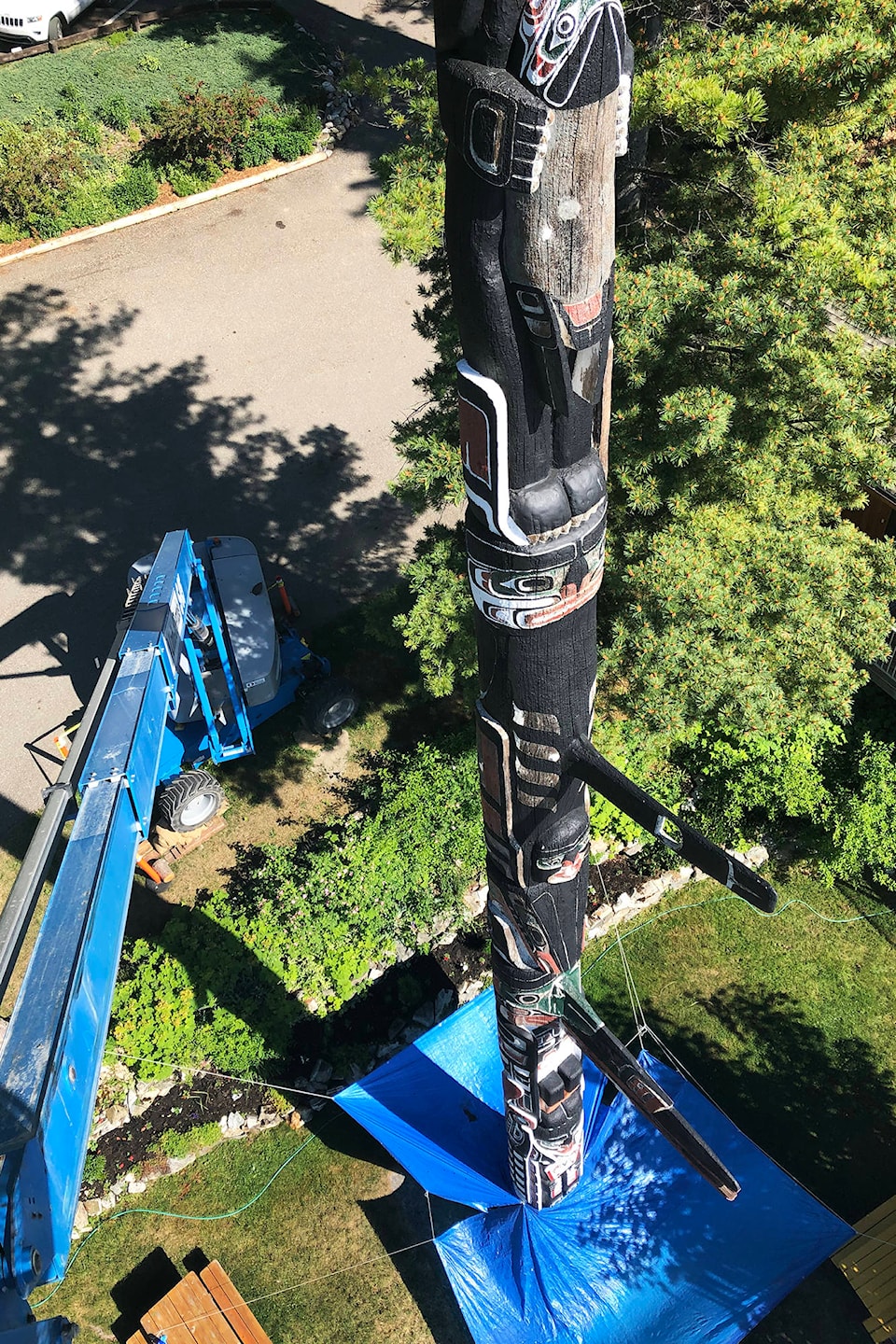By Jim Cooperman
Contributor
It is an incongruent sight, a giant totem pole on the shoreline of Shuswap Lake near the mouth of Bastion Creek.
The pride and joy of Strata K 46 at the Totem Pole Resort, this massive work of art has a remarkable lineage and a fascinating history that is well documented in the book by retired physician Doug Armstrong called “Giants of the Pacific Northwest – The Hunt Family Totem Poles.”
The word “totem” comes from an Ojibway word “do-dain” meaning “a relative of mine.” Early anthropologists used the term “totemism” to describe primitive religions that were based on mystical relationships between humans and animals or plants. Totems are sacred objects or symbols that serve as an emblem for clans, families or tribes.
While carving of house monuments and grave monuments was part of Indigenous Pacific West Coast culture for many centuries, totem poles are a relatively recent practice that began with the introduction of iron tools when Europeans arrived. The tradition reached its peak in the mid-1860s, and waned when smallpox and other diseases devasted local populations and finally died off when potlatches were banned in 1884. When the law banning potlatches was removed in 1951, totem pole carving began again.
The story behind the pole begins in 1823 when a daughter was born to the Tilingit Head Chief of Wrangell at Tongass on the southern tip of the Alaskan panhandle. Originally named Anisalaga, she became Mary and married Robert Hunt, a Hudson’s Bay company trader. They lived in Fort Rupert and when Mary’s mother died, they commissioned an 18-metre high memorial tombstone pole that was raised at her mother’s grave in Tongass after a potlatch ceremony.
Read more: South Shuswap totem pole restoration a labour of love
Read more: B.C. First Nation refuses totem pole gift from fellow nation
Read more: Shuswap Passion: How best to boost the local economy
When the original Tongass pole was stolen, Mary had a second one carved by master carver Charlie James, in the early 1900s, which was raised in front of her grandson David’s home in Fort (Prince) Rupert. In the early 1950s, the pole was cut down due to safety issues and only two sections remain and are in storage at the Glenbow Museum in Calgary.
In 1971, Allan Dray, an Alberta geologist who had retired from the oil business purchased what was then called the Nightingale Resort. A year later, he decided to commission a totem pole that would become a highly visible landmark for visitors and locals boating on the lake. When he inquired at the Royal BC Museum in Victoria, he was referred to the resident Chief Carver, Henry Hunt, who was initially dismissive of the request. When he presented Henry with a cheque for $13,000, the project began in earnest.
The pole began as one of four giant red cedar trees logged near Cowichan Lake and the carving was done in Victoria. Henry, who is Mary’s great-grandson, chose to incorporate Kwagiulth family crests from the original poles and two from his wife’s family. He was assisted by his son, Richard Hunt, who replaced him as the museum’s Chief Carver when he retired, and John Livingston, a master carver who grew up near the Hunt family.
The carving and painting was completed in the fall of 1973, and the 26–metre long pole was transported to the Shuswap by a specially outfitted logging truck. The plan was to float it to the resort, but at the last minute they chose to drive there over the rough road. The conditions were very wet and when they were close to the resort, the trailer slipped off the road and landed at the bottom of the slope. Allan was horrified as the pole was fractured and he left the next morning for Calgary.
Fortunately, John and Richard were not about to give up and, with the help of local builders, they re-attached the two sections using a 6-metre long section of channel iron, that was covered with a cedar plank inlay. Ten days later they raised it with a crane and now, years later and after three renovations, it is considered to be one of the 10 best totem poles in the world.
@SalmonArm
newsroom@saobserver.net
Like us on Facebook and follow us on Twitter
